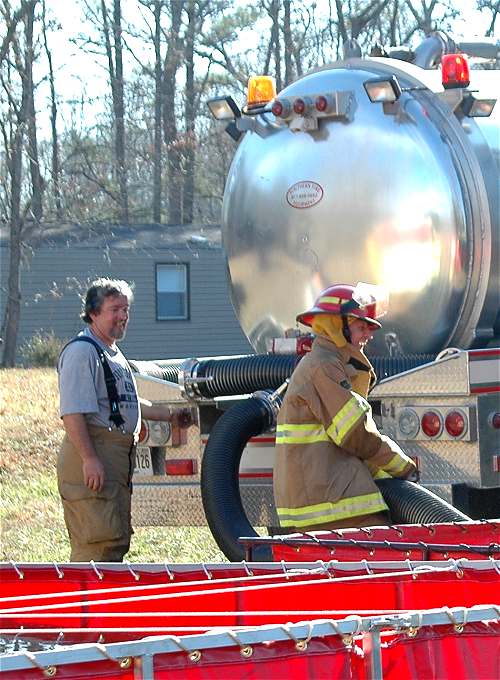Special All-Day Saturday Training January 12
I'm late in getting this training session written up. It's photograph heavy, so most of the pics are thumbnails, and you can see a somewhat larger version in a new page by clicking on the thumbnail. I have even larger versions, so let me know if you want a particular photo and I'll email it to you.
This was an all-day session Saturday Jan 12. We met at Wolfskin Station at 8AM, or most of us did, anyway. Ultimately there were six of us here - a couple of us were rabbit hunting that day and couldn't make it ;-) . Nice and cold - temperatures below 30 to start with, and stayed in the 40s all day.
One of the problems with Thursday night training sessions is that while they allow us a coupla hours to practice tactics, they don't give us enough time to really exercise the demands that a large fire call lasting for hours would. This was a good idea - we ended up using most of our stuff.
The event was a large woodpile that had accumulated for a few years, and it represented an opportunity to stage a burn as though it were a real all-day scene. (Note that we don't normally burn in this manner, or necessarily recommend it. It was a convenient and valuable training exercise. Not to say that we didn't have fun.)
After calling in for a permit and notifying 911 so they'd be able to reassure passersby and neighbors, we set off for the burn site. (Note on permit: the permit number is a cell phone number. Not much good if you're in an area of non-reception, as we were.)
Our first mistake - no one had thought to bring the sausage biscuits for breakfast. (Our second, and only other mistake - no one thought to bring any food at all. A fire picnic lacking in food over nine hours is not a picnic at all.)
The first coupla hours were in setup. We eventually used all three 2500-3500 gallon drop tanks. The pumper was our first out and working truck for the incident.
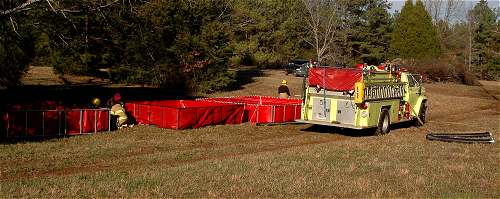
It took three trips with the tanker to fill them all. A successful backup down a muddy slope:
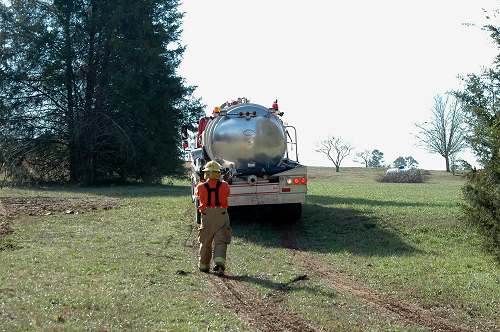
Outgoing Chief Mike Geraci is giving his final instructions to incoming Chief Ed Frey, behind the tanker.
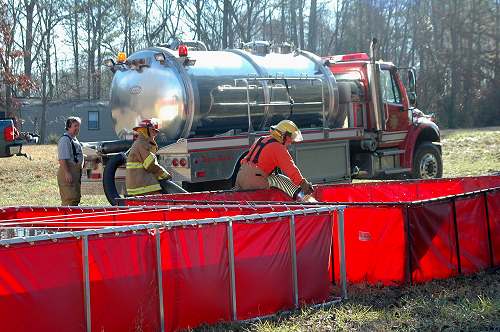
Since we don't close hydrant access in our fire district, the drop tanks are a necessity. Here's two thumbnails showing the connections we've developed for increasing their flexibility, and a third of the excuse for the event.
Left - a tight connection between the drains of two drop tanks allows us to treat two as one. Water delivered into one flows into the other so you don't have to move the truck to prevent overflow.
Middle - a jet siphon. With this you can use the venturi principle and move around large amounts of water through a six-inch hose by jetting a smaller amount of water through a smaller hose into the larger one. That's the brain child of our new Asst Chief and Training Officer, and it worked the first time.
Right - the ostensible reason for this event grown large. That's a foam stick nozzle, and we were testing it out for the first time. The old way is to use buckets of foam concentrate, which is awkward. The foam nozzle here has a single foam stick inserted into it and the delivered water dissolves the solid material gradually, delivering foam out the end. It worked *really* well.
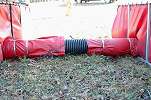
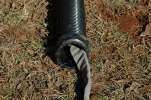
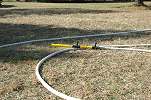
Four of us worked on setting up while the other two played in the woodpile preparatory to setting it on fire, which we did around 10:48AM, according to the time stamp on the first photo. This one was taken well after things got going. The lads did a good job prepping the pile for an efficient burn.
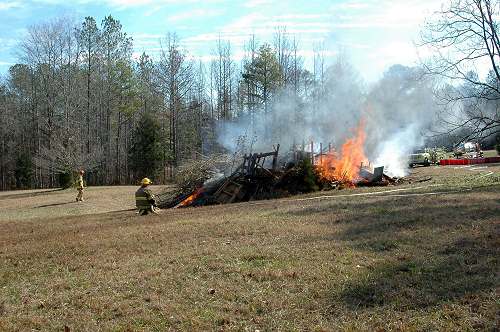
The first thumbnail on the left is just for show, but the middle one shows the hose connection. We used a wye to give two streams, one to a conventional nozzle being lugged around by the stalwart fellows on the left, and the other heading off to the right to the foam nozzle.
The third thumbnail shows the use of fog to cool the American Heroes in back as they approach, say, a burning propane tank, though not in this case.
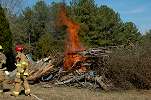
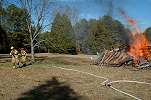
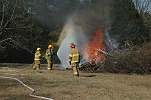
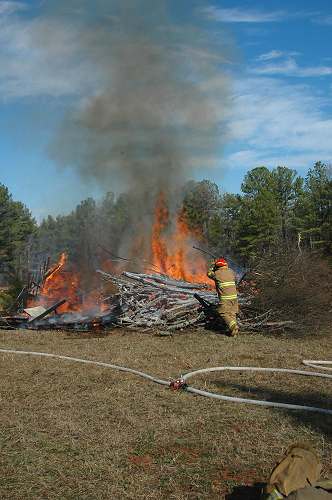 | By noon, the fire was going merrily. We had a total of thirteen 50-foot lengths of 1-1/2 inch hose hooked together in three lengths and separately connected to various outlets on the pumper. Our engineer did a great job of providing water and controlling pressure from several hundred feet away. Some of us used our radios to communicate - others just yelled or gestured impatiently. |
First row of thumbnails:
Left - a not very clear use of the foam. The foam stick worked great, and lasted all day. It reduced by a huge amount the water that had to be put on the fire to extinguish a part of it.
Middle - a pecan tree that was too close - we kept a spray on it periodically to prevent damage. This is a common tactic for protecting all sorts of things that might be close to a large fire.
Right - more use of fog to cool things off on an approach. Fog isn't always what you want to use on a fire but it does keep you from getting radiation burns!
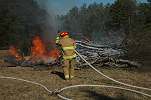
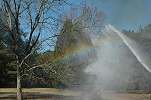
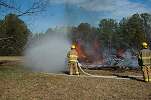
And a last couple of gratuitous images. There are a lot more photos, and they're all very good. Most are probably of internal interest and I'll probably set up a separate page of them. In which case I'll post a notification and email any of interest.
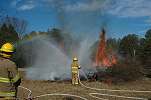
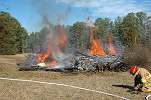
By 3pm we were pretty tired and none of our fellows who didn't make it to the event had brought us any food. (In fairness, one of our rabbit-hunting American Hero fellows did try to call to offer, but reception in the area was apparently nonexistent and phones went unanswered.) And we still had to disconnect and roll up thirteen lengths of hose, drain and disassemble three drop tanks, and make sure the remains of the fire were contained! Not to mention carting everything back into the station. We did finish up by 5:30pm though, and in the end thought it a very successful day training. I'm not sure we want to do this once a month but it's definitely something that should be done occasionally. As Fire Chief Ed said, it's what you'd have to do for a long fire call, and nothing in an evening training of a coupla hours prepares you for it.
--Wayne

